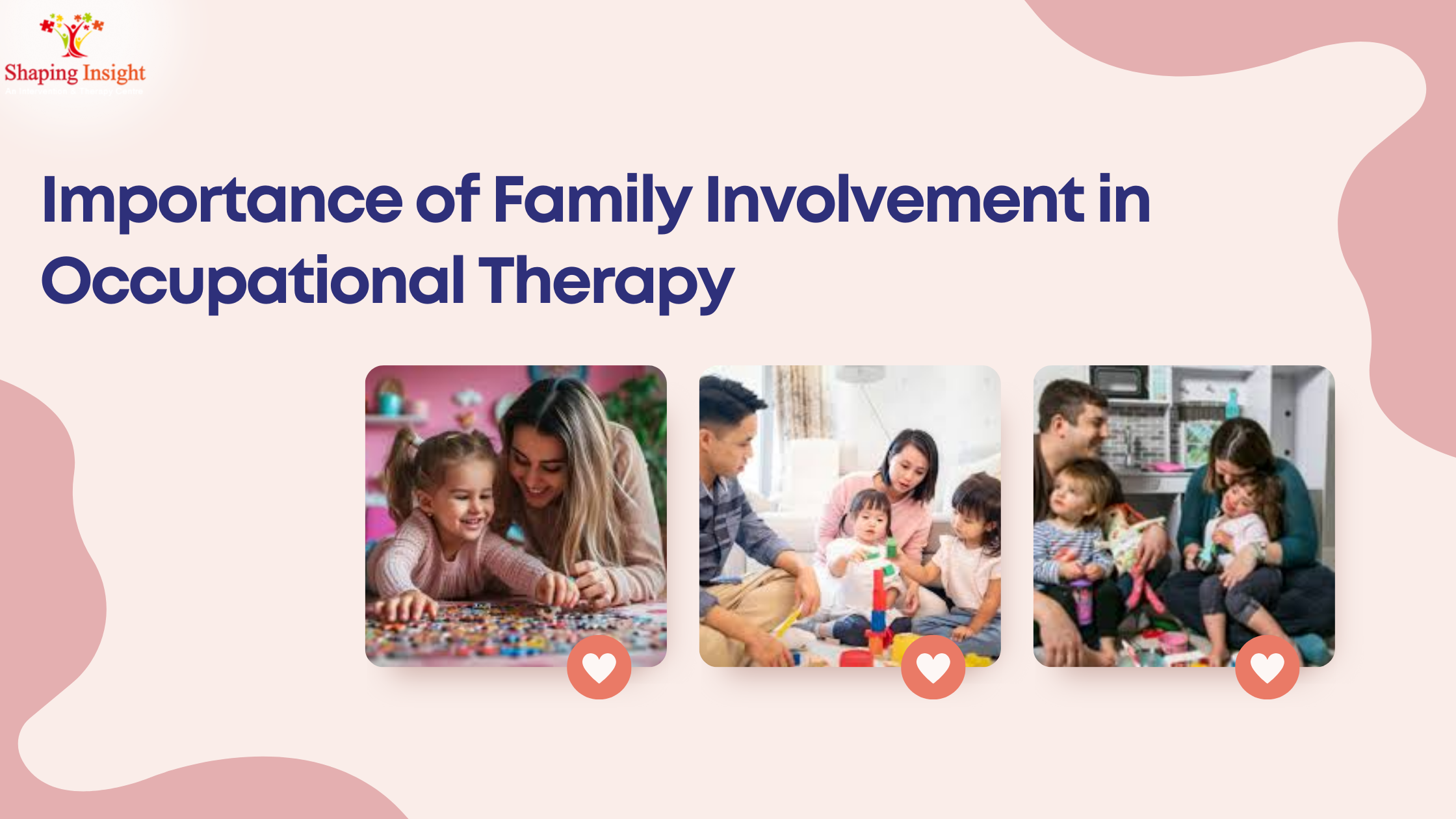Introduction
Effective communication between families and occupational therapy (OT) professionals is crucial for achieving successful therapy outcomes. Occupational Therapy plays a vital role in improving the quality of life for individuals with physical, emotional, and cognitive challenges.
At Shaping Insight, Mulund, we believe that effective communication between families and Occupational therapy (OT) professionals is the key to unlocking the best outcomes for individuals in therapy. Whether addressing developmental delays, physical rehabilitation, or sensory challenges, a collaborative approach ensures that therapy plans are tailored to meet the unique needs of every individual. In this blog, we’ll explore the importance of family involvement, strategies for enhancing communication, and how our dedicated team of the best Occupational therapists in Mulund works closely with families to create a supportive and empowering environment.
Understanding Occupational Therapy
Occupational therapy is a healthcare discipline that helps individuals develop, recover, or maintain skills necessary for daily living and working. It is not limited to a single age group but covers diverse areas such as pediatrics, geriatrics, and rehabilitation.
Key Areas of Occupational Therapy Involvement
| Area | Description |
| Pediatrics | Helping children with developmental delays, sensory issues, or motor challenges. |
| Geriatrics | Supporting elderly individuals with mobility, self-care, and cognitive skills. |
| Rehabilitation | Assisting people recovering from injuries, surgeries, or chronic conditions. |
A collaborative approach ensures that therapy is personalized and impactful, with the family’s input shaping treatment plans.
The Role of Families in Occupational Therapy
Family involvement significantly influences therapy outcomes. Families provide emotional and practical support, which motivates individuals undergoing therapy. By understanding their role, families can contribute actively to the success of therapy.
Contributions of Families
| Type of Support | Examples |
| Emotional Support | Encouragement, patience, and understanding during therapy sessions. |
| Practical Support | Following home exercises, assisting with therapy goals, and maintaining routines. |
Therapists value family perspectives as they provide insights into the individual’s strengths, challenges, and preferences, which help in crafting effective therapy plans.
Barriers to Effective Communication
Despite the importance of family involvement, several barriers can hinder communication with Occupational therapists.
- Complex Terminology: Therapists may use medical jargon that families find difficult to understand.
- Emotional Stress: Anxiety or emotional overwhelm can prevent families from expressing their concerns clearly.
- Time Constraints: Balancing therapy sessions with work and other commitments can limit communication.
- Cultural Differences: Misunderstandings can arise due to differing cultural perspectives on therapy and care.
Strategies for Effective Communication
Families can adopt the following strategies to enhance communication with Occupational therapists from our Centre:
- Preparation: Before meetings, write down questions or concerns to ensure all topics are addressed.
- Active Listening: Pay attention to what the therapist is saying and seek clarification if needed.
- Open Dialogue: Share insights about the individual’s behaviuor, progress, or challenges at home.
- Regular Feedback: Provide constructive feedback to improve therapy sessions and align goals.
Building a Collaborative Relationship
Strong relationships between families and therapists form the foundation of effective therapy. At Shaping Insight, Mulund, fostering collaboration is a priority.
- Establishing Trust: Therapists build rapport by showing empathy and understanding family concerns.
- Involving Families: Families are encouraged to participate in therapy sessions to observe techniques and practice at home.
- Mutual Respect: Open communication and respect for each other’s roles ensure a harmonious partnership.
Utilizing Technology for Communication
Technology is transforming how families and therapists communicate. Digital tools simplify sharing updates and discussing therapy goals.
Using latest technology in smooth communication regarding therapy helps families to maximise the benefits such as using video calls for updates and educational apps to practice skills at home
Conclusion
Effective family communication with Occupational Therapy Professionals is the cornerstone of successful therapy outcomes. At Shaping Insight, Mulund, the focus is on building strong, collaborative relationships that empower families and individuals to achieve their goals. Families are encouraged to actively participate, ask questions, and share their perspectives to create a supportive and inclusive therapy environment.
By breaking communication barriers, families and therapists can work together to ensure the best possible outcomes for those in therapy.


